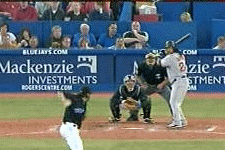I'm tired of ex-mlb players not knowing how to teach the fundamentals. This is an ex 10 year mlb vet (major league vet, not minors) teaching the wrong hitting mechanics. At the end of the video, he states "the hands lead the hips, and it is wrong for the hips to lead the hands." Video below.
http://www.youtube.com/watch?v=5oRrTIoI_pU
This is wrong, and John Mallee (finalist for the Texas Ranger hitting coach - replace Jaramillo)states the correct process of the swing. Video evidence provided.
http://www.youtube.com/watch?v=DA_PK6JPg9Y
Original Post




